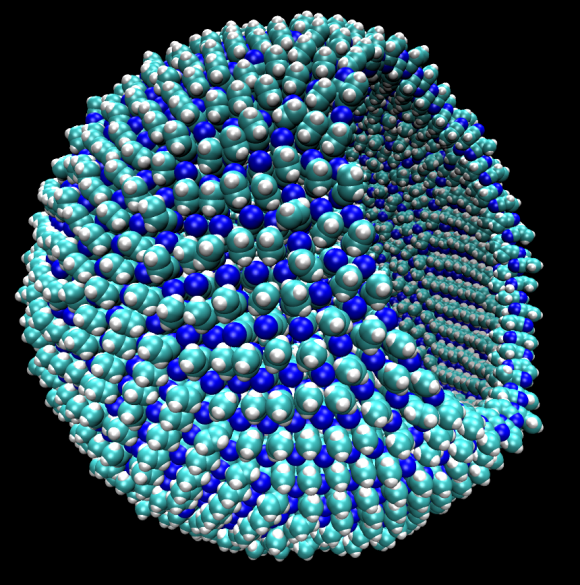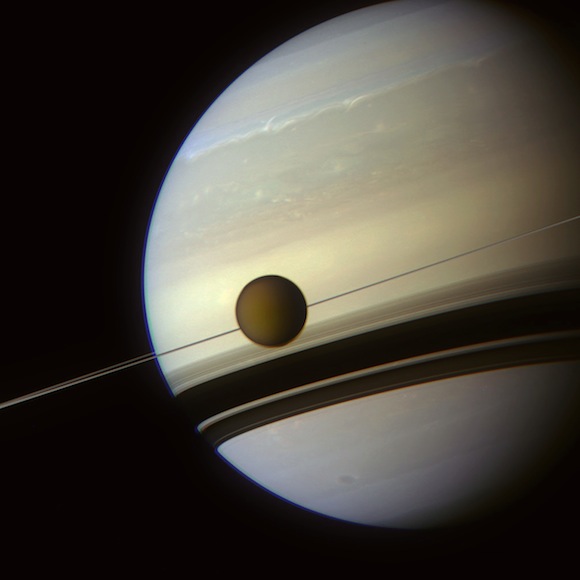
Scientists at Cornell University have created a theorized cell membrane based not on water, but on methane. They offer a template for how life how might exists in much colder worlds than Earth, specifically Titan, the giant moon of Saturn. The researchers suggest that Titan, a world awash with seas of liquid methane, could harbor methane-based, oxygen-free cells that metabolize, reproduce and do everything life on Earth does.
Their theorized cell membrane, composed of small organic nitrogen compounds and capable of functioning in liquid methane temperatures of 292 degrees below zero, was published in Science Advances, February 27, 2015.
Enjoying EarthSky so far? Sign up for our free daily newsletter today!

Enjoying EarthSky? Sign up for our free daily newsletter today!
Here on Earth, life is based on the phospholipid bilayer membrane, the strong, permeable, water-based vesicle that houses the organic matter of every cell. A vesicle made from such a membrane is called a liposome. Thus, many astronomers seek extraterrestrial life in what’s called the circumstellar habitable zone, the narrow band around the sun in which liquid water can exist. But what if cells weren’t based on water, but on methane, which has a much lower freezing point?
The work was led by Paulette Clancy, the Samuel W. and Diane M. Bodman Professor of Chemical and Biomolecular Engineering at Cornell. She said:
We just worked with the compounds that we knew were there and asked, ‘If this was your palette, what can you make out of that?’
The scientists named their theorized cell membrane an “azotosome,” “azote” being the French word for nitrogen. “Liposome” comes from the Greek “lipos” and “soma” to mean “lipid body;” by analogy, “azotosome” means “nitrogen body.”
The azotosome is made from nitrogen, carbon and hydrogen molecules known to exist in the cryogenic seas of Titan, but shows the same stability and flexibility that Earth’s analogous liposome does.
The researchers said the next step is to try and demonstrate how these cells would behave in the methane environment – what might be the analogue to reproduction and metabolism in oxygen-free, methane-based cells.
Cornell astronomer Jonathan Lunine is the paper’s co-author. Lunine is an expert on Saturn’s moons and an interdisciplinary scientist on the Cassini-Huygens mission that discovered methane-ethane seas on Titan. Lunine looks forward to the long-term prospect of testing these ideas on Titan itself, as he put it, by
…someday sending a probe to float on the seas of this amazing moon and directly sampling the organics.
First author James Stevenson, Cornell graduate student in chemical engineering, said he was in part inspired by science fiction writer Isaac Asimov, who wrote about the concept of non-water-based life in a 1962 essay, “Not as We Know I.” Stevenson said:
Ours is the first concrete blueprint of life not as we know it.
Bottom line: A Cornell University study, published in Science Advances, February 27, 2015, describes a theorized cell membrane based not on water, but on methane, a template for how life how might exists on the giant moon of Saturn.











